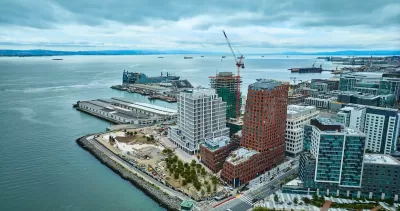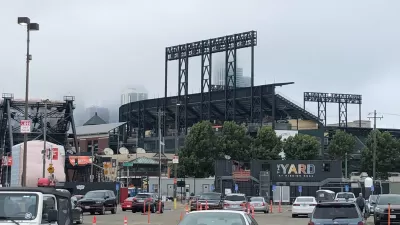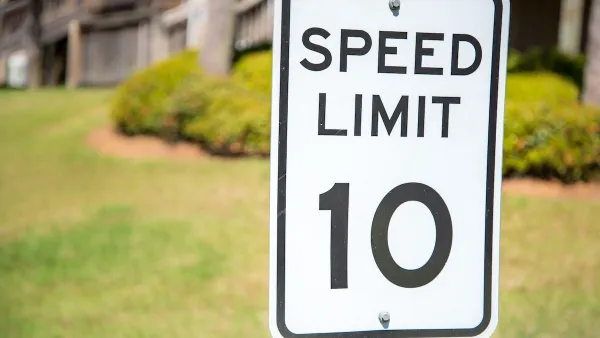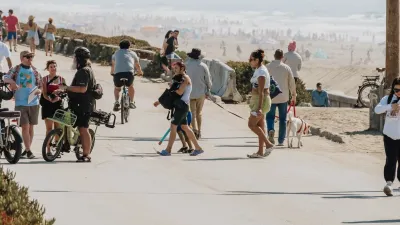The Mission Rock project eliminates street parking, replacing it with public seating and landscaping.

A new waterfront development in San Francisco could offer a more pedestrian-oriented model for U.S. neighborhoods, writes Nate Berg in Fast Company. “Uniquely, the neighborhood has been designed with pedestrian-first streets that do not allow on-street parking. The new street rooms are designed to give pedestrians more spaces to use along its two main corridors.”
Even in walkable San Francisco, car-free streets are rare. The 28-acre development, called Mission Rock, still offers some car access, but “The street itself at Mission Rock is revolutionary in its own regard. It was designed to be curbless, creating a completely flat 60-foot canyon between the building frontages on either side. Subtle steel grates provide drainage and a marker between the narrow car-accessible space and the rest of the public realm, and a small trapezoidal grade elevation makes a perceptible barrier for the visually impaired.”
The project includes three “street rooms” that center on public art that is designed to be sat on, climbed, or rested under. According to CMG Landscape Architecture cofounder Willett Moss, “The street rooms were developed to be places that people can hang out. They are, in this case, places where things are whimsical, and different identities and qualities and experiences can be expressed.”
FULL STORY: San Francisco’s newest neighborhood offers a glimpse of life without cars

Maui's Vacation Rental Debate Turns Ugly
Verbal attacks, misinformation campaigns and fistfights plague a high-stakes debate to convert thousands of vacation rentals into long-term housing.

Planetizen Federal Action Tracker
A weekly monitor of how Trump’s orders and actions are impacting planners and planning in America.

San Francisco Suspends Traffic Calming Amidst Record Deaths
Citing “a challenging fiscal landscape,” the city will cease the program on the heels of 42 traffic deaths, including 24 pedestrians.

Defunct Pittsburgh Power Plant to Become Residential Tower
A decommissioned steam heat plant will be redeveloped into almost 100 affordable housing units.

Trump Prompts Restructuring of Transportation Research Board in “Unprecedented Overreach”
The TRB has eliminated more than half of its committees including those focused on climate, equity, and cities.

Amtrak Rolls Out New Orleans to Alabama “Mardi Gras” Train
The new service will operate morning and evening departures between Mobile and New Orleans.
Urban Design for Planners 1: Software Tools
This six-course series explores essential urban design concepts using open source software and equips planners with the tools they need to participate fully in the urban design process.
Planning for Universal Design
Learn the tools for implementing Universal Design in planning regulations.
Heyer Gruel & Associates PA
JM Goldson LLC
Custer County Colorado
City of Camden Redevelopment Agency
City of Astoria
Transportation Research & Education Center (TREC) at Portland State University
Jefferson Parish Government
Camden Redevelopment Agency
City of Claremont





























